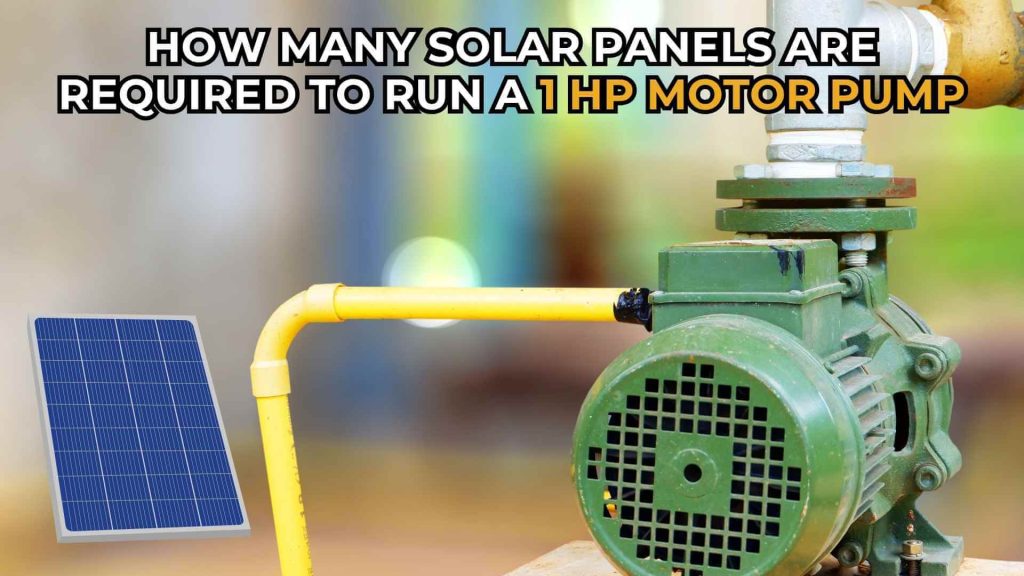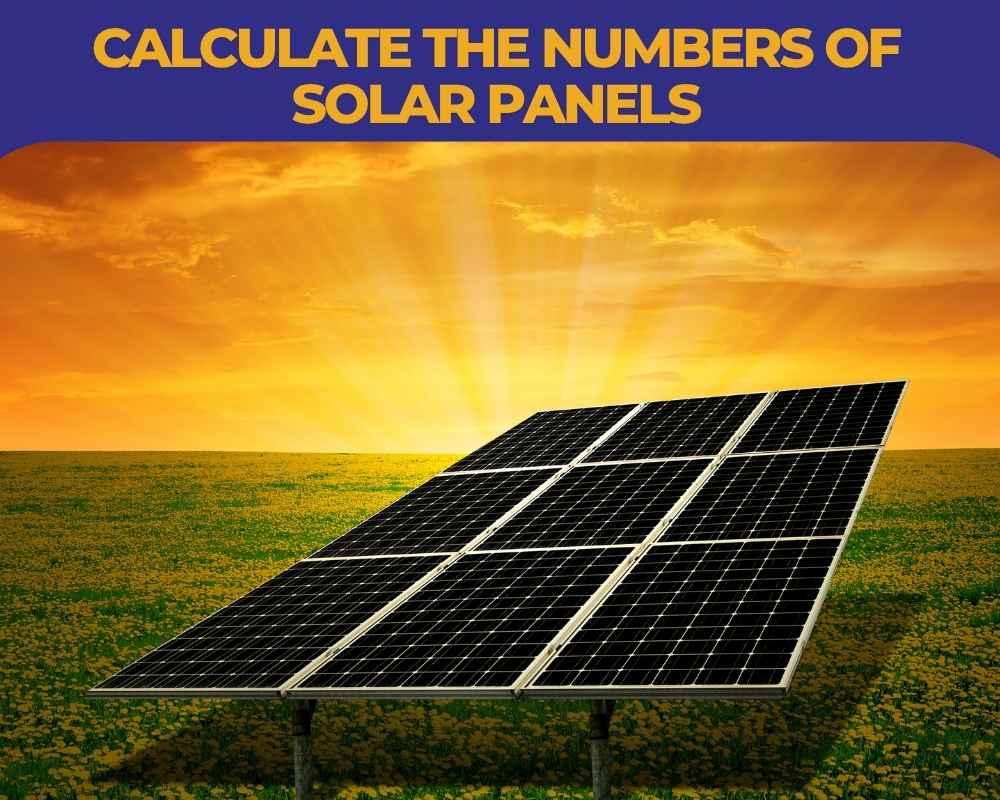Utilizing solar energy to operate a 1 horsepower (HP) motor is a smart and eco-friendly way to reduce electricity expenses and minimize your environmental impact. With more homeowners and businesses adopting solar power to cut costs and promote sustainability, it’s no wonder this renewable energy source is gaining traction.
However, determining how many solar panels are required to run a 1 HP motor depends on several important factors, such as the motor’s power needs, the amount of sunlight in your area, and the efficiency of the solar panels.
In this article, we’ll guide you step-by-step in calculating how many solar panels you need to operate your 1 HP motor.

Understanding the Energy Consumption of a 1 HP Motor
Before diving into the specifics of how many solar panels are needed, it’s crucial to first understand the energy consumption of the 1 HP motor.
Estimating Power Usage for a 1 HP Motor
Since 1 horsepower is equivalent to approximately 745.7 watts, a 1 HP motor consumes:
1 HP × 745.7 W/HP = 745.7 watts (or approximately 0.75 kW).
This indicates that under normal operating conditions, the 1 HP motor will consume about 745.7 watts of power.
Taking Inrush Current into Account
It’s important to note that motors typically experience a surge of electricity known as inrush current when starting up. This surge can be 5 to 7 times higher than the motor’s normal running current. While the focus here is not on the technicalities of inrush currents, it’s essential to design your solar system to handle this initial surge to ensure your motor starts up efficiently.
Key Components of a Solar System for a 1 HP Motor
To run a 1 HP motor using solar energy, you’ll need more than just solar panels. Your solar-powered system will include the following components:
- Solar Panels: These devices capture sunlight and convert it into usable electricity. The number of panels you require will depend on the motor’s energy needs and the panel’s efficiency.
- Inverter: Since solar panels generate direct current (DC) and motors run on alternating current (AC), an inverter is needed to convert DC into AC.
- Battery Storage (Optional): If you wish to store surplus energy for later use (e.g., at night or on cloudy days), you’ll need a battery storage system.
- Charge Controller (Optional): A charge controller ensures that the battery is properly charged, preventing overcharging and extending battery life.
Estimating the Number of Solar Panels Needed

Daily Energy Consumption
Assuming the motor operates for 8 hours per day, we can calculate its daily energy consumption:
Energy per day = 745.7 W × 8 hours = 5,965.6 watt-hours (5.97 kWh) per day.
Accounting for System Losses and Inverter Efficiency
Energy losses occur due to factors such as shading, dust, and wiring inefficiencies. Additionally, the inverter typically operates at 85% to 95% efficiency. To account for these losses, it’s advisable to add a 25% buffer to the total energy requirement:
Adjusted energy requirement = 5.97 kWh × 1.25 = 7.46 kWh per day.
Solar Panel Capacity and Peak Sun Hours
Modern solar panels typically range from 250W to 400W in capacity. For this example, let’s assume you are using 300W panels and your location receives an average of 5 hours of peak sunlight per day.
Energy produced by one panel per day = 300W × 5 hours = 1.5 kWh per panel.
Calculating Total Number of Panels
To determine the total number of panels required:
Number of panels = 7.46 kWh ÷ 1.5 kWh per panel = 4.97 panels.
Since you can’t install a fraction of a panel, you’ll need approximately 5 solar panels of 300W each.
Other Important Considerations
- Location and Sunlight Exposure: The number of panels needed will vary based on the amount of sunlight your location receives. For example, regions with more sunlight, such as California, will need fewer panels than areas with limited sunlight.
- Seasonal Changes: During winter or cloudy months, solar output may decrease. Therefore, you should design your system to account for these seasonal variations, especially if you depend on solar energy year-round.
- Panel Efficiency: Panels with higher efficiency convert more sunlight into usable power, reducing the number of panels required. While these panels are more expensive, they may be a good investment if space is limited or you prefer fewer panels.
- Panel Orientation and Tilt: Solar panels should be tilted at an optimal angle (usually facing south in the Northern Hemisphere) to maximize energy absorption throughout the day.
- Battery Storage: If you need to operate your motor during hours when the sun is not shining, you will need a battery system. This will increase the total number of solar panels needed to generate enough energy to charge the batteries.
In conclusion, running a 1 HP motor on solar power is a viable, sustainable solution. Based on the calculations above, around 5 solar panels of 300W each will be required to run the motor for 8 hours per day under average conditions.
Contact Gecko Solar Energy
We specialize in providing customized solar solutions to meet your energy needs. Whether you’re powering a 1 HP motor or other machinery, we can help you transition to a sustainable and cost-effective solar system.
- Phone: +1 619 826 6600
- Email: hello@geckosolarenergy.us

Switch to solar today and contribute to a greener, more sustainable future while lowering your electricity bills.



